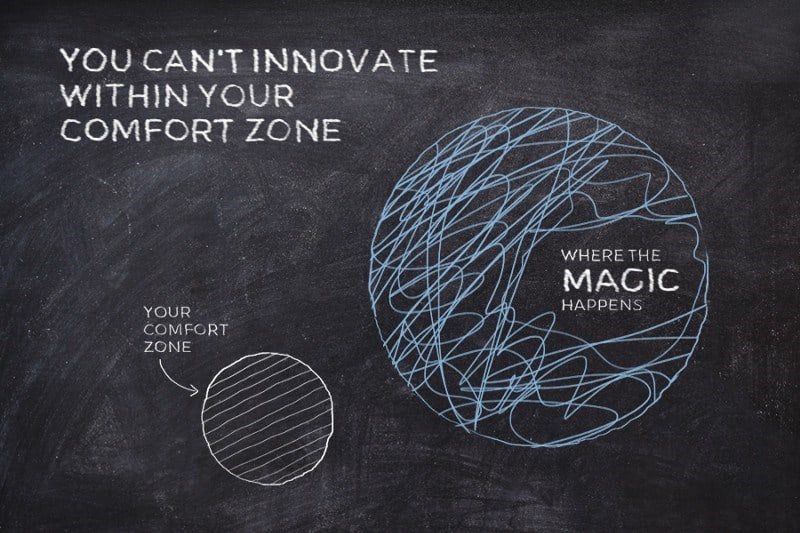To make sure your efforts in software engineering shine in a realm where everyone is constantly upping their game, it’s not just about how many programming languages you can juggle or your coding prowess. It’s more about how you make your mark with what you bring to the table—your unique solutions, the innovative twists you add, and the impact of your contributions. So, how do you make sure your hard work doesn’t just blend into the background in this tech-savvy world?
Table of Contents
Why Recognition Matters
In this dynamic environment, getting your work recognized is like having a beacon that guides ships at night. It’s not just about basking in the glory of your accomplishments; it’s about carving out a niche for yourself in a competitive field. Recognition leads to better opportunities, higher visibility in the tech community, and can even influence the path of your career.
Receiving acknowledgment in this ever-changing setting is akin to possessing a guiding light for vessels during darkness. It extends beyond merely reveling in the triumph of one’s achievements; it involves creating a distinctive position for oneself in a fiercely contested domain. Acknowledgment opens doors to improved prospects, heightened prominence in the tech community, and even has the potential to shape the trajectory of one’s professional journey.
Picture this — two software engineers, equally skilled, but one is more recognized than the other. Who do you think gets the lead on the next big project or the promotion? Recognition is a career accelerator. It’s the difference between being a hidden gem and a celebrated innovator. It’s not just about what you know, but also who knows what you know.
1. Building Your Tech Toolkit – But Make It Personal: Sure, knowing your way around code is great, but let’s focus on what makes you, well, you! It’s like having a secret ingredient in your favorite recipe. Maybe you’ve got a unique way of simplifying complex problems, or perhaps you’re the go-to person for the latest tech trends. Embrace that!
2. Your Brand Isn’t Just a Logo: When we talk about your personal brand, think about what makes your colleagues say, “Yep, that’s definitely [Your Name]’s work!” Is it your meticulous attention to detail, your creative solutions, or maybe your legendary code comments that make everyone chuckle? That’s your brand. Own it.
3. Networking – Less Handshake, More Genuine Connections: Forget stiff networking events. Think about joining online communities, attending local meetups, or even striking up conversations on social media. Share your experiences, ask for advice, and be that supportive voice for others. It’s like building your own little tech family.
4. Show and Tell with Your Portfolio: This isn’t just a display of your projects; it’s your personal tech storybook. Each project is a chapter showcasing your skills, challenges you’ve overcome, and the innovative solutions you’ve crafted. Make it a portfolio that you’d want to flip through on a lazy Sunday afternoon.
5. The Art of Keeping an Impact Record: Imagine this as your own hall of fame. Celebrate those moments, big or small, that made you feel like a tech superhero. It could be a thank-you message from a teammate, a successful project launch, or even a bug you squashed after hours of detective work. These are your triumphs. Jot them down.
So, let’s dive into this journey with the enthusiasm of a coder who just found the perfect solution after hours of debugging. It’s time to show the world what makes you a standout software engineer – not just in your coding skills, but in your unique approach to the tech world. Let’s do this!
Building Technical Expertise
Ready to dive into the cornerstone of any software engineer’s journey? It’s all about building and honing your technical expertise. After all, your skills are the foundation upon which your career and recognition are built. Let’s explore how to master this craft and stay ahead in the game.
Embrace Continuous Learning: The tech world never sleeps, and neither should your desire to learn. Whether it’s mastering a new programming language, getting hands-on with the latest framework, or exploring a burgeoning tech trend, the learning never stops. Online courses, webinars, and tech conferences are your allies in this quest for knowledge.
Stay Updated and Relevant: The best software engineers have their fingers on the pulse of the industry. Subscribe to tech blogs, follow thought leaders on social media, and participate in tech forums. Staying informed about industry updates isn’t just about knowledge; it’s about being prepared for the future.
Practical Application: Knowledge is power, but applied knowledge is superpower. Don’t just learn; implement. Work on side projects, contribute to open source, or even develop your own applications. It’s through applying what you learn that you truly master your craft and create something worth recognizing.
Networking Through Expertise: Your technical skills can also be a networking tool. Share your expertise by answering questions on platforms like Stack Overflow or GitHub. Being helpful not only builds your reputation but also solidifies your understanding of complex concepts.
In the upcoming section, we delve into an often-overlooked aspect of getting recognized – writing an impactful ‘brag document’ or achievement log. This tool can be a game-changer in highlighting your contributions and achievements. Stay tuned for some invaluable tips on how to craft this key piece of your professional toolkit!
Writing an Impact Record: Your Brag Document
There’s this common belief that if you do great work, recognition in terms of promotions and pay raises will naturally follow. But, let’s face it – the real world is more nuanced. Some types of important work are more visible and memorable than others, and it’s frustrating when significant contributions get overlooked. That’s why I want to share a tactic that’s been a game-changer for many: the brag document.
The Reality of Recognition: When performance review season rolls around, have you ever found yourself thinking, “Wait, what exactly did I accomplish in the past six months?” It’s a common feeling, often stemming from simply forgetting the cool stuff you actually did. You’re not alone in this; even your manager might not remember everything significant you’ve done. And if they can’t remember, they can’t effectively advocate for you when it matters.
The Tactic: A Brag Document: Here’s a straightforward solution – maintain a brag document. It’s a list where you chronicle all your accomplishments, big and small, making it easier to reference during performance reviews. You’d be surprised how many experienced professionals use this tactic. It’s not just about promotions; it helps you reflect on your work, identify themes, and plan what you might want to do differently.
Starting Your Brag Document: Begin by jotting down accomplishments as they happen. Whether it’s mentoring an intern, leading a critical project, or contributing to a design doc, every bit counts. And don’t forget those smaller, sometimes fuzzy tasks like refining code quality or enhancing code reviews. These are often underappreciated but crucial to team success.
Sharing Your Document: Initially, sharing your brag document with your manager or during peer reviews might feel awkward, like you’re saying, “Look at all this amazing stuff I did.” But in reality, it’s incredibly helpful for them. It arms your manager with concrete examples of your work, making their job of advocating for you much simpler.
Reflecting and Recognizing Patterns: This document isn’t just a tool for others to recognize your work; it’s also for you. Reflect on what you feel proud of, the patterns in your projects, and what you wish to do more or less of. It’s a powerful tool for self-evaluation and growth.
Different Approaches: Some people update their brag document bi-weekly, while others prefer a deep dive every six months or so. Find the rhythm that works for you.
Encouraging Each Other: A great side effect of maintaining brag documents is creating a culture of recognition and encouragement. When it becomes a norm, you’ll see colleagues reminding each other to celebrate and document their accomplishments.
If you’d like to dig deeper, Julia Evans has an excellent post about the brag document.
Learn the art of expectation management to stay aligned with your stakeholders.
In the next section, we’ll talk about the importance of your professional network and community involvement in getting your work recognized. Stay tuned for insights on building meaningful connections in the tech world!
Networking and Community Involvement: Expanding Your Tech Circle
So, you’ve got your brag document ready, and you’re rocking your job. What’s next? It’s time to step out of your comfort zone and expand your professional network. Networking and community involvement aren’t just about collecting business cards or adding LinkedIn connections; they’re about building genuine relationships and contributing to the broader tech community.
Why Networking Matters: Think of networking as planting seeds for future opportunities. It’s not just about finding your next job; it’s about exchanging ideas, gaining different perspectives, and staying abreast of industry trends. Plus, a strong network can be a source of support, mentorship, and collaboration.
Effective Networking Strategies: Start by attending tech meetups, conferences, and seminars. These events are goldmines for connecting with like-minded professionals. Be authentic, be curious, and remember, networking is a two-way street – think about how you can help others as well.
Leveraging Online Communities: In today’s digital age, online communities like Stack Overflow, GitHub, or even Twitter can be powerful networking platforms. Engage in discussions, contribute to open-source projects, or share your knowledge through blogs or webinars. Your online presence can significantly boost your professional visibility.
Contributing to Open Source: Speaking of open-source, contributing to these projects not only showcases your technical skills but also demonstrates your commitment to collaborative development. It’s a brilliant way to gain recognition from peers globally and can often lead to unexpected career opportunities.
Mentorship and Giving Back: Whether you’re a seasoned pro or relatively new to the field, there’s always room to mentor others. Sharing your knowledge and experience not only helps others grow but also reinforces your own understanding and establishes you as a knowledgeable leader in your field.
Building Long-Lasting Relationships: Networking isn’t a one-off task. It’s about building and nurturing relationships over time. Follow up with your contacts, share useful resources, and stay engaged. Remember, the strongest professional relationships often stem from genuine interactions and mutual support.
In the next section, we will explore the art of creating and maintaining a personal brand as a software engineer. This is about more than just your technical skills; it’s about how you present yourself to the professional world.
Creating a Personal Brand: Your Professional Identity
Now that we’ve covered networking and community involvement, let’s talk about a crucial aspect of getting recognized: your personal brand. In the digital era, creating a personal brand is more than a fancy buzzword; it’s about carving out your niche in the tech world.
What is a Personal Brand? Your personal brand is how you present yourself to the professional world. It’s the combination of skills, experiences, and personality that you want the world to see. It’s what people say about you when you’re not in the room. Your personal brand is your story, and you are its author.
Why It Matters: In a field as vast as software engineering, a strong personal brand can set you apart. It can lead to better job opportunities, invitations to speak at conferences, and collaborations on projects. It’s your professional identity that can open doors and amplify your career.
Building Your Brand Online: In today’s connected world, your online presence is a key component of your personal brand. Platforms like LinkedIn, GitHub, and even Twitter are stages where you can showcase your expertise, share your thoughts on industry trends, and connect with peers. Regularly update your profiles, post about your projects, and engage with your network.
Consistency is Key: Whether it’s your communication style, the type of content you share, or the way you engage with others, consistency is crucial. It helps in building a recognizable and trustworthy professional persona.
Showcasing Your Expertise: Use your personal brand to highlight your unique skills and experiences. Write blog posts about your technical challenges and successes, share your project portfolios, or create content that helps others in your field. This not only demonstrates your expertise but also your willingness to contribute to the community.
Engaging and Authentic: Remember, the most effective personal brands are both engaging and authentic. Be true to yourself. Let your personality shine through. People connect with people, not just profiles.
Next, we’ll discuss how to effectively showcase your achievements, from building a compelling professional portfolio to leveraging professional networks for maximum impact.
Showcasing Achievements: Making Your Mark Visible
You’ve done impressive work, built a solid network, and carved out a personal brand. Now, let’s focus on effectively showcasing your achievements. It’s not just about what you’ve done; it’s about making your accomplishments visible and understandable to others.
Building a Professional Portfolio: Your portfolio is the showcase of your career. It should include a selection of your best work – projects you’ve led, significant contributions to team efforts, and any innovative solutions you’ve developed. Remember to explain the context, your role, and the impact of each project. If you’ve worked on software that can’t be publicly shared, consider case studies or descriptive summaries to convey your involvement and the challenges you addressed.
Effective Use of LinkedIn and Other Networks: LinkedIn isn’t just for job searching; it’s a platform to highlight your professional journey. Regularly update your profile with new achievements, endorsements, and recommendations. Engage with your network by sharing insights, commenting on industry news, and participating in relevant discussions. The goal is to keep your profile active and engaging, reflecting your ongoing professional growth.
Speaking at Conferences and Webinars: Public speaking can significantly enhance your visibility in the tech community. Seek out opportunities to speak at conferences, webinars, or local meetups. Topics could range from technical deep dives to your experiences in tech. Not only does this position you as a thought leader, but it also broadens your network and opens doors to new opportunities.
Documenting and Reflecting: Alongside your brag document, maintain a record of your presentations, publications, and any accolades or recognitions. This not only serves as a personal reminder of your achievements but can be an invaluable resource during performance reviews or job interviews.
Collaboration and Credit: In team settings, ensure your contributions are recognized. This doesn’t mean overshadowing team efforts but ensuring that your role and input are clearly documented and communicated, whether in project reports, during team meetings, or in casual conversations with your superiors.
Continuous Update and Improvement: Your achievements are not static; they grow as you do. Regularly revisit and update your portfolio and professional profiles to reflect your latest accomplishments and learnings.
In the following section, we will delve into strategies for gaining recognition in the workplace, from effective communication to leading initiatives.
Workplace Strategies for Recognition: Standing Out in Your Job
You’ve mastered the art of showcasing your achievements externally, but what about getting recognized where it matters most – your workplace? Let’s dive into some effective strategies to ensure your hard work and contributions get the attention they deserve in your job.
Communicate Effectively: Communication is key in the workplace. It’s not just about speaking up in meetings; it’s about clearly articulating your ideas, contributions, and the impact of your work. Be proactive in providing updates on your projects and don’t shy away from discussing the challenges you overcame. This helps in creating visibility for your efforts and achievements.
Take Initiative: Often, recognition comes to those who don’t just do their job well but also go the extra mile. Volunteer for new projects, especially those that align with your career goals or allow you to showcase your unique skills. Initiating and leading a project not only demonstrates your leadership potential but also your commitment to the company’s success.
Seek Feedback and Mentorship: Regular feedback is crucial for professional growth. Seek out mentors within your organization who can provide guidance and help you navigate your career path. Their support and advocacy can be instrumental in getting your work recognized by higher-ups.
Document Your Achievements: Similar to your external brag document, keep a record of your achievements, feedback, and accolades within the company. This can be a powerful tool during performance reviews or discussions about promotions.
Build Relationships: Foster strong relationships with your peers, managers, and other departments. Networking internally is just as important as external networking. It’s about building a reputation as a reliable, collaborative, and skilled professional.
Understand the Decision-Makers: Know who makes decisions about promotions and recognition in your organization. Understand their criteria and what they value in employees. Tailor your approach to ensure your efforts align with these values.
Stay Aligned with Company Goals: Align your work and achievements with the company’s objectives and goals. When your work contributes directly to the company’s success, it’s more likely to be recognized and rewarded.
Your Journey to Recognition Starts Now
We’ve journeyed through the landscape of getting your work recognized as a software engineer, from building technical expertise to effectively showcasing your achievements. Each step is a piece of the puzzle in building a fulfilling and recognized career in software engineering.
Recap of Key Strategies: Remember, it’s not just about doing great work; it’s about making sure that work is seen and appreciated. Your brag document is your secret weapon; networking and community involvement are your power moves; creating a compelling personal brand is your signature; showcasing achievements is your showcase; and applying smart strategies in the workplace is your masterstroke.
Motivation and Encouragement: It’s time to step out of the shadows and into the spotlight. You have the tools, strategies, and insights needed to make your mark in the tech world. Don’t underestimate the power of recognition in shaping your career and opening doors to new opportunities.
Call to Action: Start today. Update your brag document, reach out to a potential mentor, share your knowledge in a tech community, or take on a new project at work. Every step you take is a step towards greater recognition and a more rewarding career.
Thank you for joining me on this journey. Your skills, ideas, and contributions are valuable and deserve to be recognized. Go out there and show the tech world what you’re made of!




